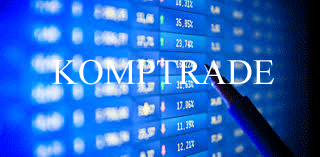The Euro collapses against the Dollar confirming our predictions.
- alain kwenkeu nouho
- 2022年9月18日
- 讀畢需時 3 分鐘
On 22/08/2022 the EUR/USD value went down to 0.9951. The resistance at 1.02 could not hold.

The European currency, fell below parity with the Dollar on Monday August 22, reaching a floor of 0.9951 USD for 1 Euro. This is a historic low since its release in 2002. The Euro thus lost 0.84% against the dollar, this is not so much the weakness of the Euro as the strength of the Dollar which has in fact consolidated against all the other currencies. The dollar’s recent brawniness has resulted in the largest weekly rise since March 2020, according to Commodity Futures Trading Commission (CFTC) data.
The Euro thus stabilized below parity with the Dollar.
The strength of the Dollar is due to a combination of factors.
The Dollar yields more than the Euro.
In order to contain inflation in the United States, the FED raised interest rates to 2.5%, thus making the cost of borrowing more expensive, something the European Central Bank (ECB) cannot do for fear of a recession due to the energy crisis, it kept these rates at 0.5% because very high rates like those of the FED could have consequences that vary according to the Member States. A sharp rise in interest rates would weaken the countries already in difficulty, against the background of the fear of a new sovereign debt crisis.
In July the ECB had already raised its rates by half a point. a further increase of 0.5 points is expected at its meeting on 08/09/2022, but this would not be enough to offset that of the FED with a risk of recession in the Euro zone. Some analysts believe that a 3rd rise to 0.75 could occur in September, we believe that the ECB will not take such a risk.
In addition, a cut in Fed rates is not expected before the end of 2023.
The energy crisis in Europe.
besides the fact that the Dollar remains strong against other currencies, this is even more true against the Euro for 2 reasons:
The price of petroleum products and natural gas has risen sharply and remains high in Europe. The price of European gas had jumped by more than 20% in one week, Monday, to rise to 295 euros per megawatt hour (MWh).
Europe pays for these petroleum products and natural gas in Dollars and therefore needs to acquire Dollars to pay for its energy.
With the energy crisis, Europe risks recession, which worries investors. In addition, the yield on three-month US government bonds is at its highest, which makes the dollar a safe haven.
The situation can became worse as Russia announced the closure of the Nord Stream 1 gas pipeline, which supplies the bulk of Russian gas to Europe, between August 31 and September 2, which will further increase the price of natural gas.
Risk of recession in Europe.
The rise in energy prices in Europe leads to inflation and a risk of recession.
In Europe, inflation reached 8.9% in July 2022 in the euro zone. In Germany, it could “exceed 10%. This inflation had started to climb with the recovery of the economy post-Covid-19, and was accentuated with the beginning of the Russian invasion in Ukraine.
The energy crisis has a strong impact on German industry, which is the engine of the economy. The International Monetary Fund IMF has revised these rates downwards in Europe and forecasts GDP growth of 2.6% in 2022 and 2% in 2023, or even a recession for the Fall - Winter.
Our forecasts
The war in Ukraine is set to last at least until Winter, so the energy crisis in Europe is not going to get better, the Dollar will consolidate against the Euro.
